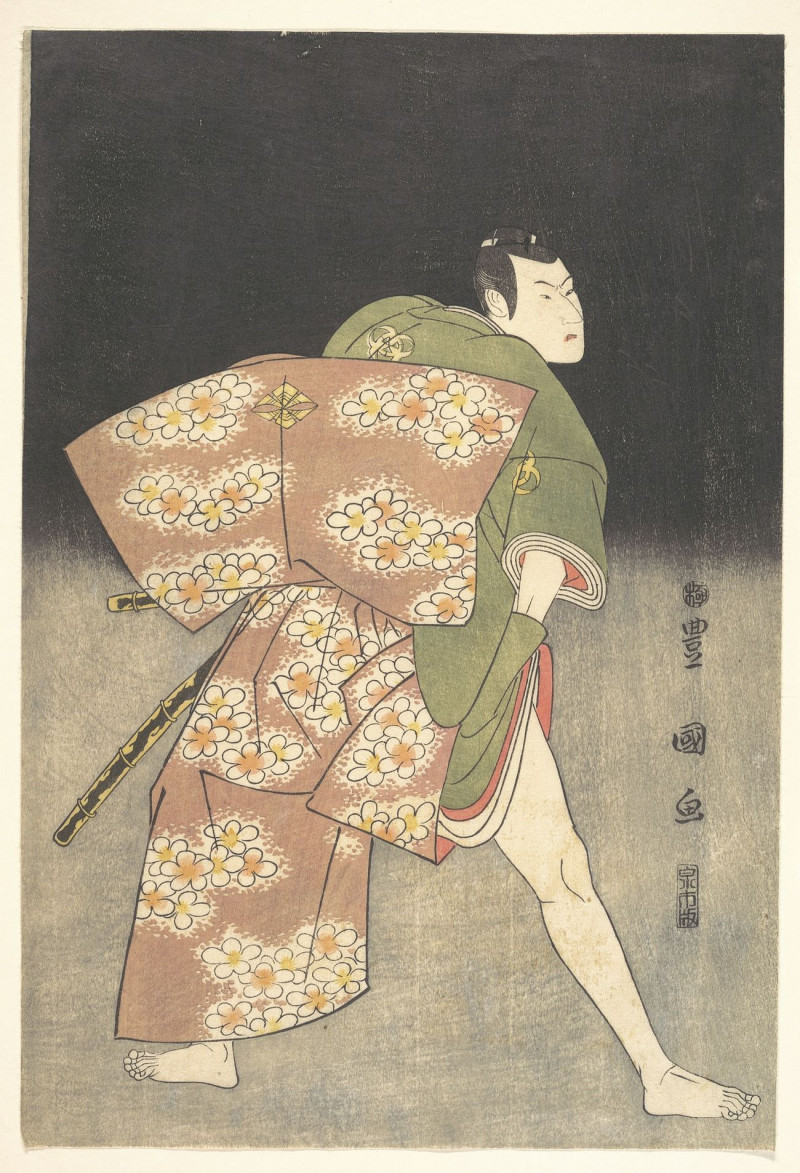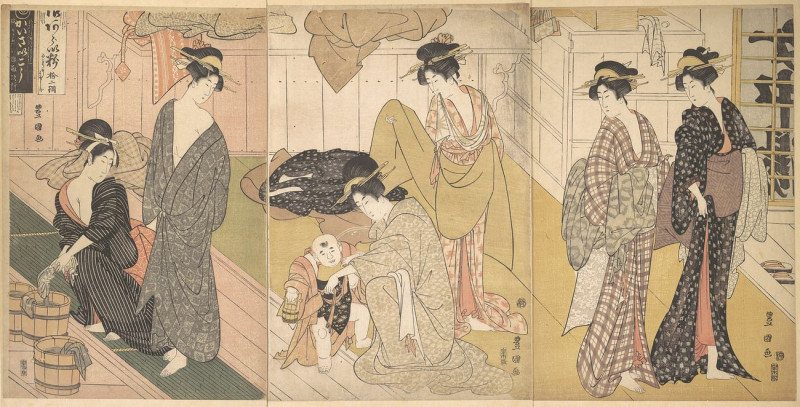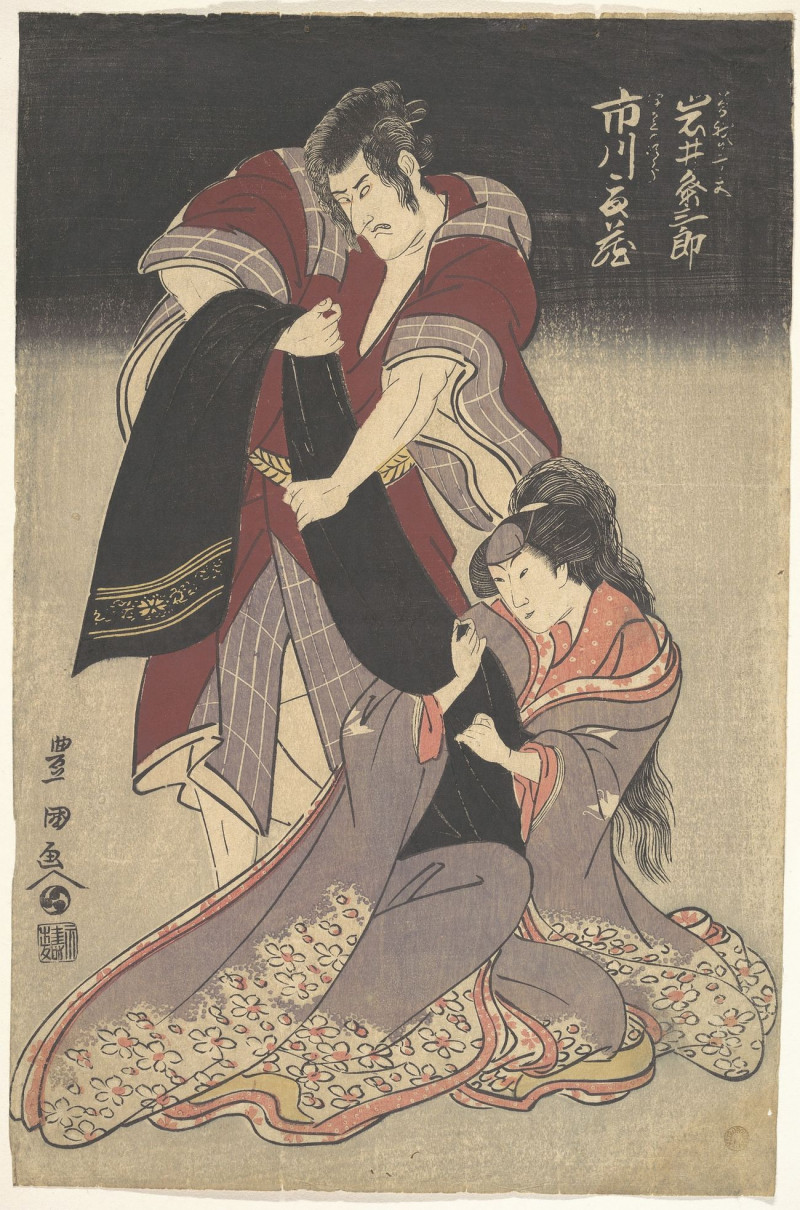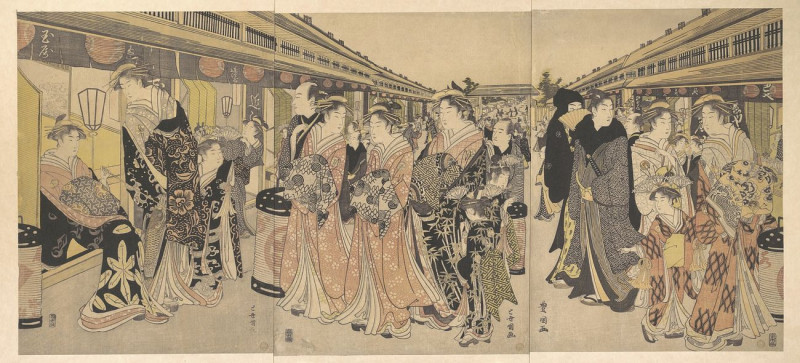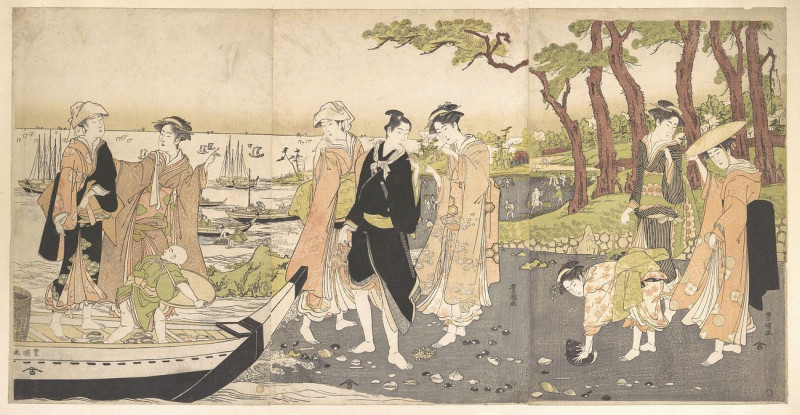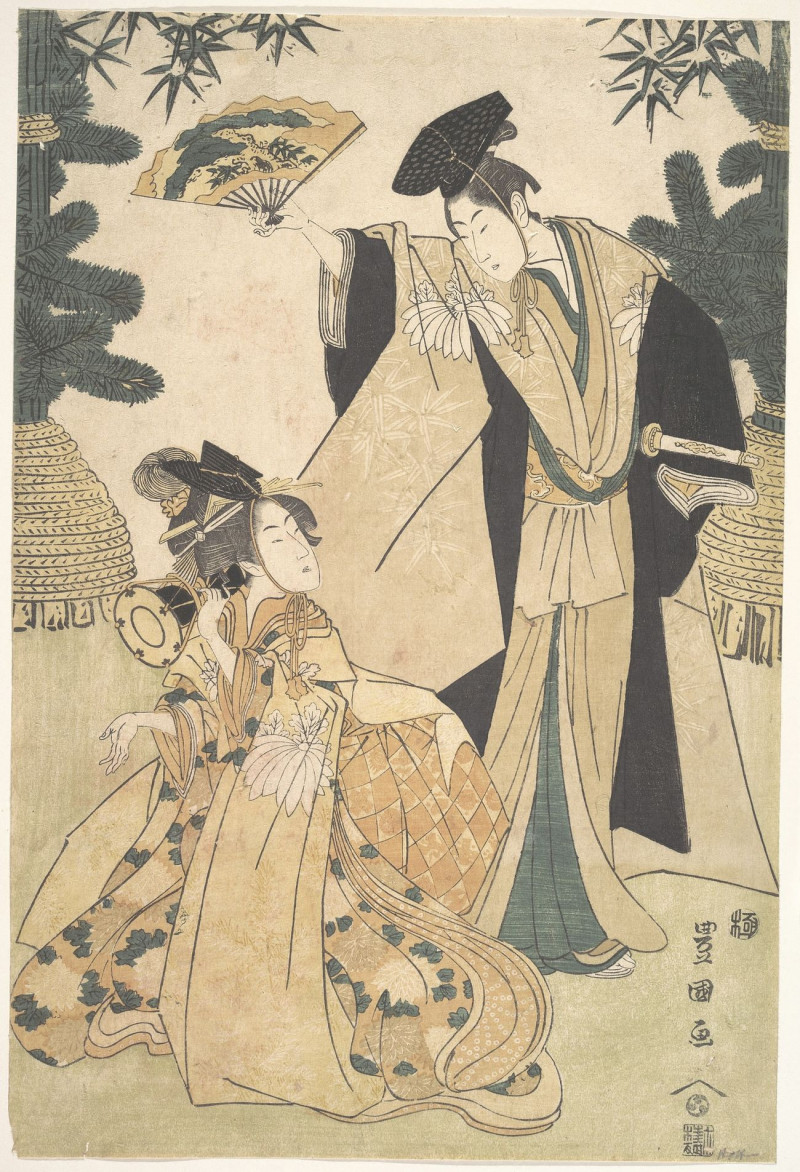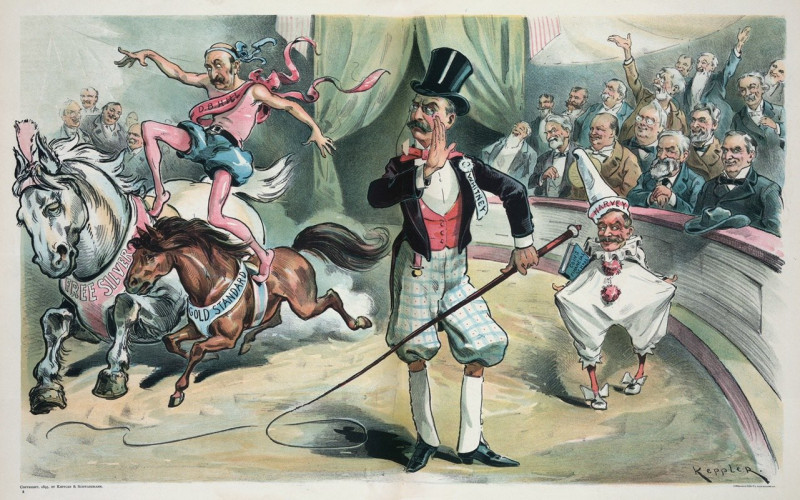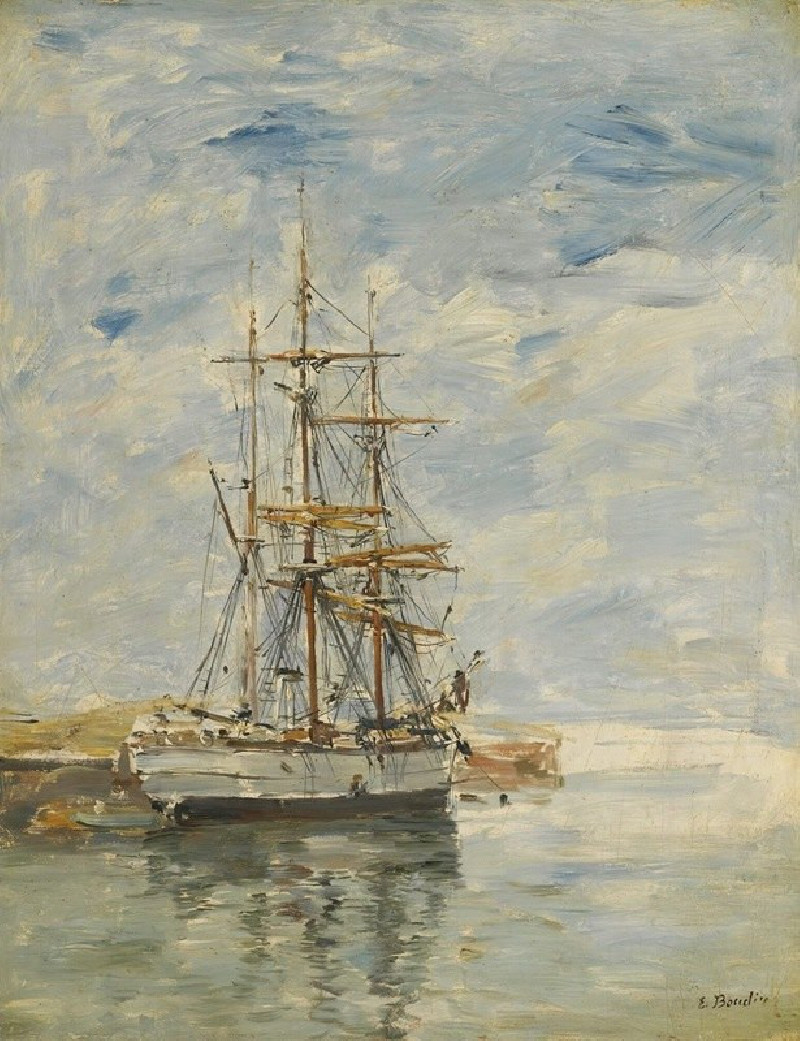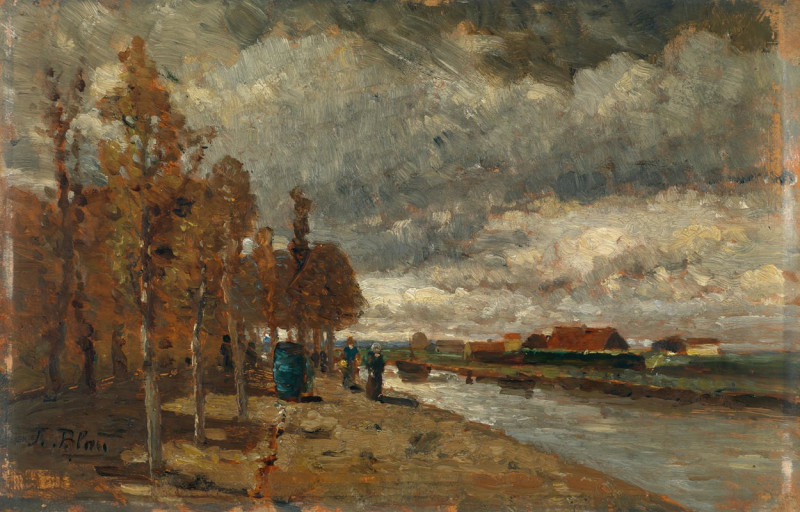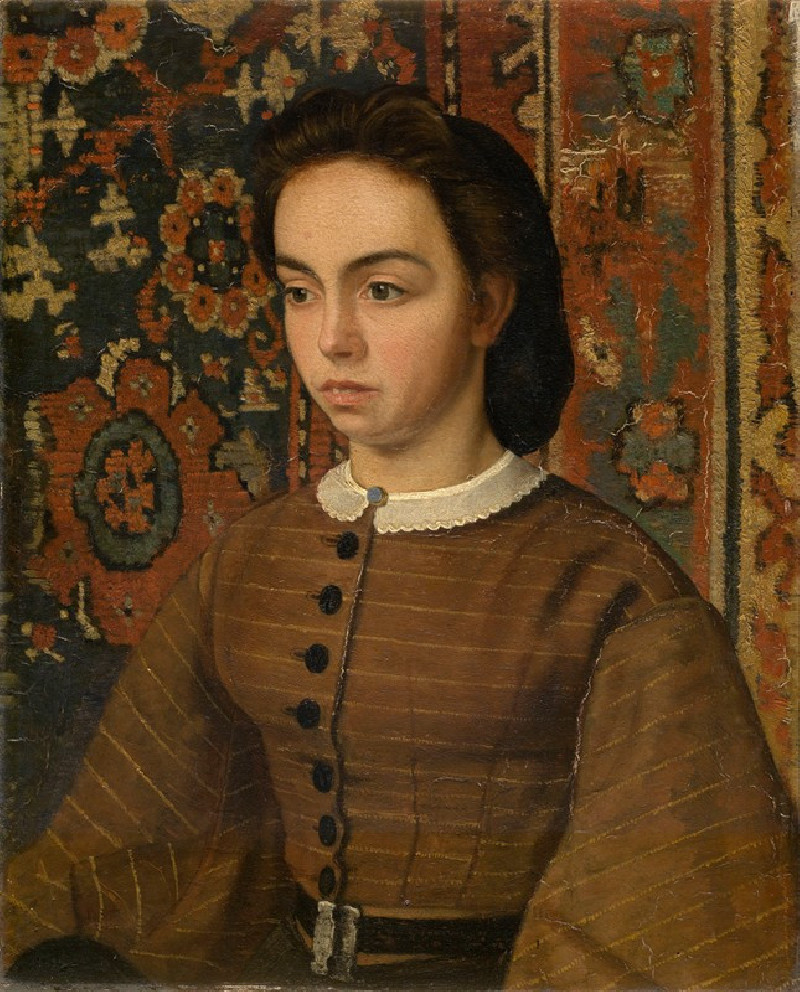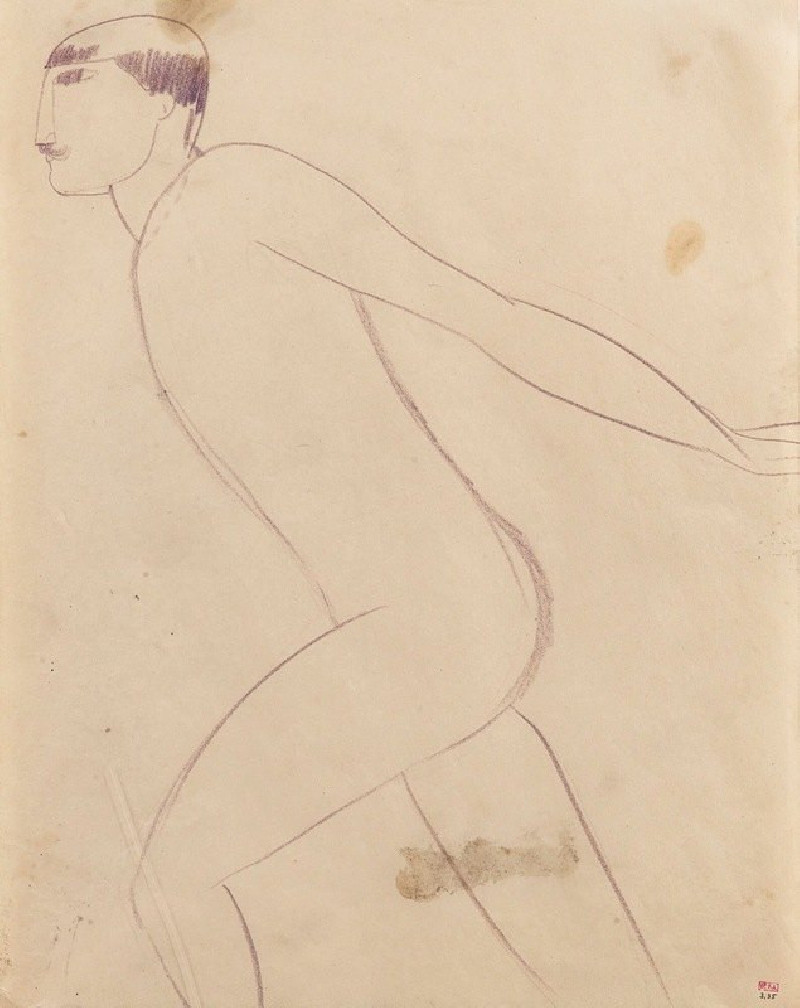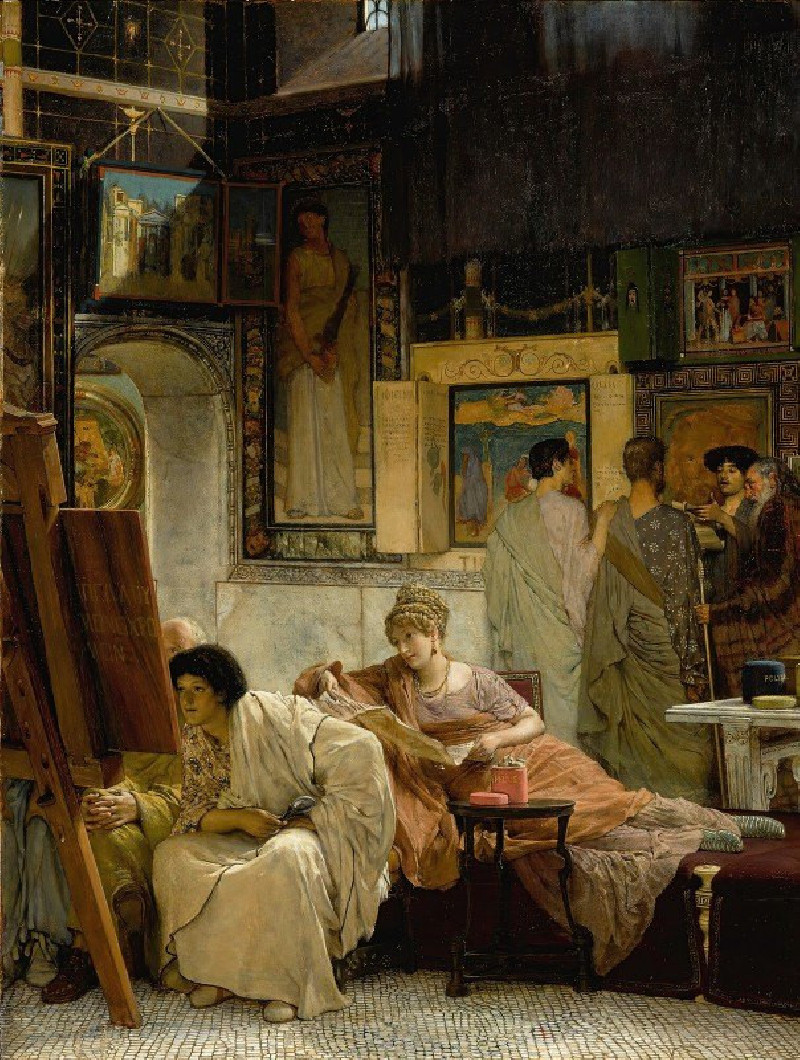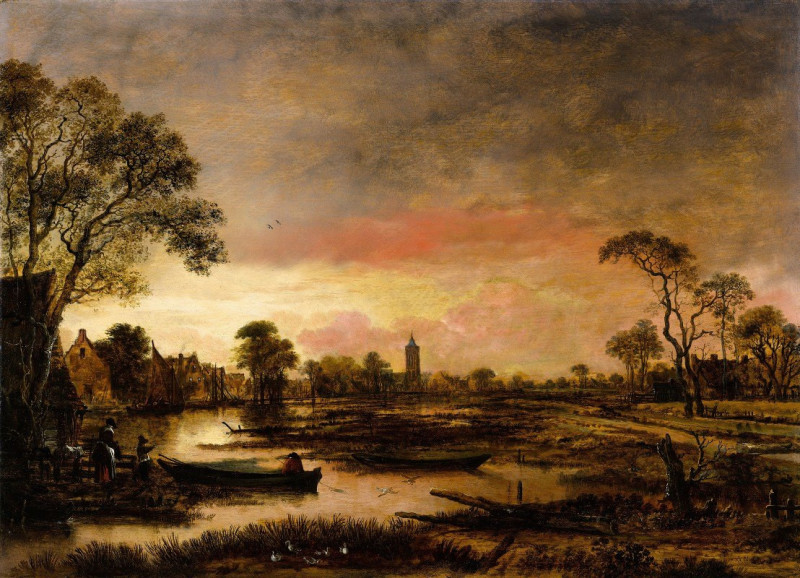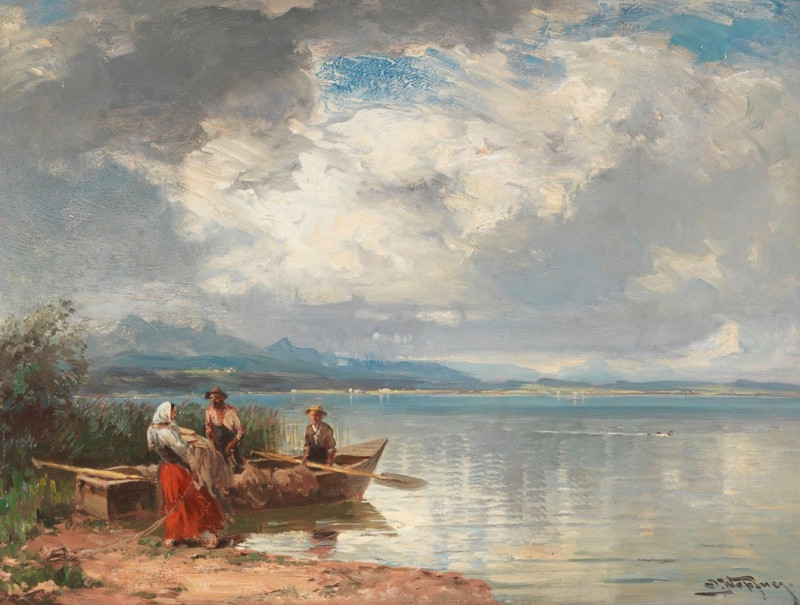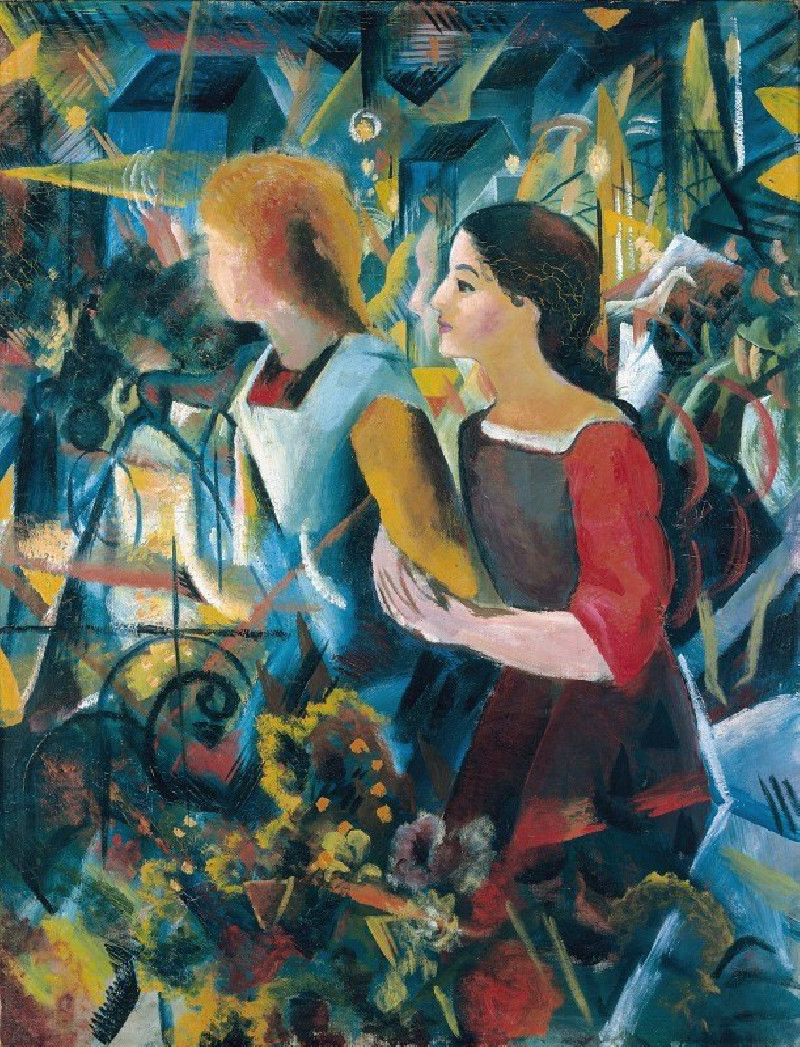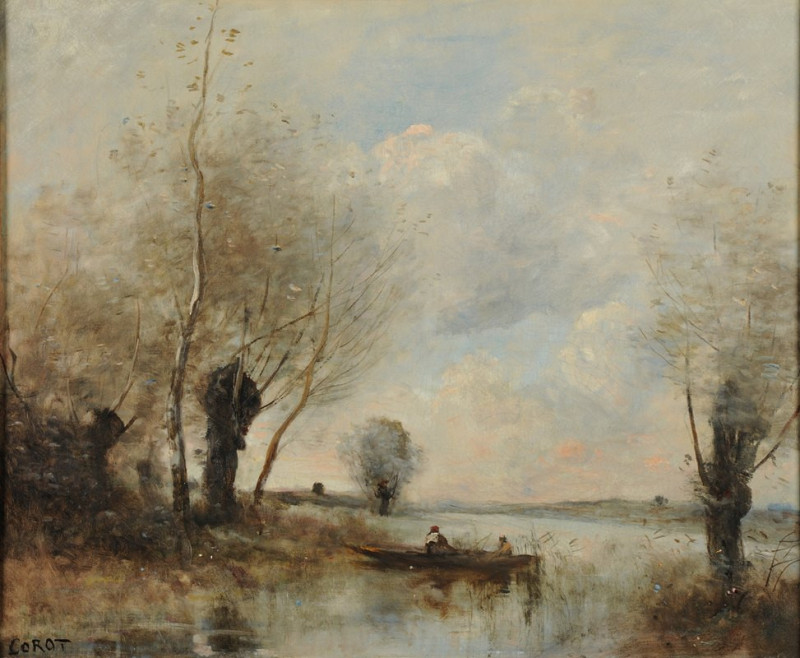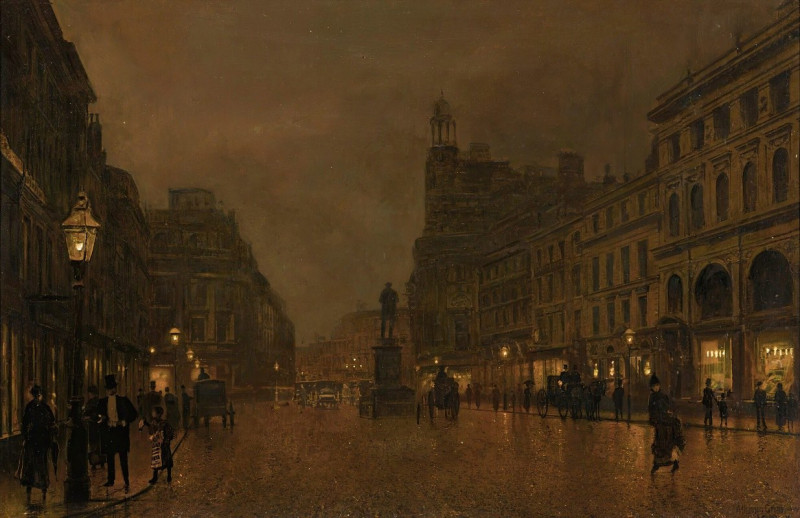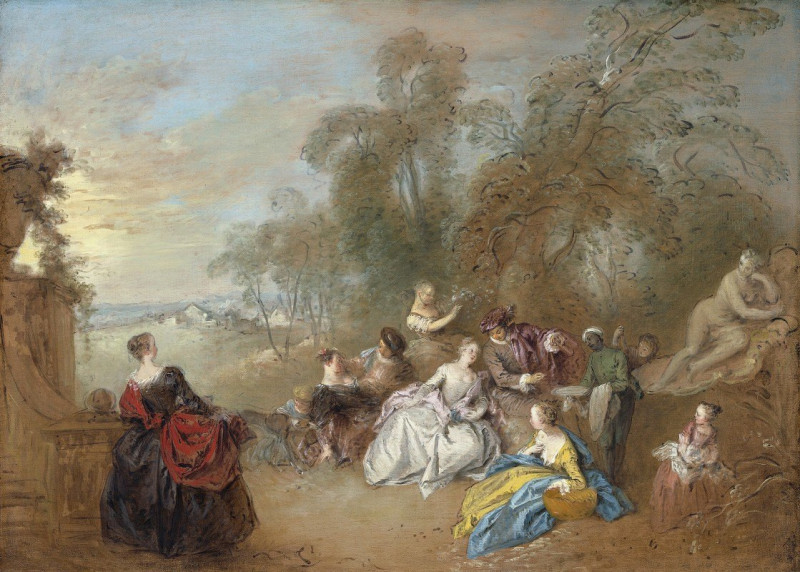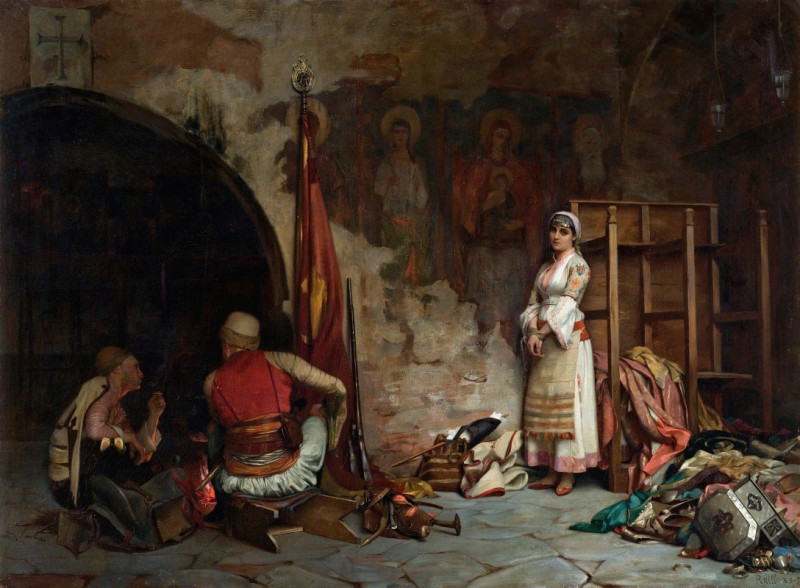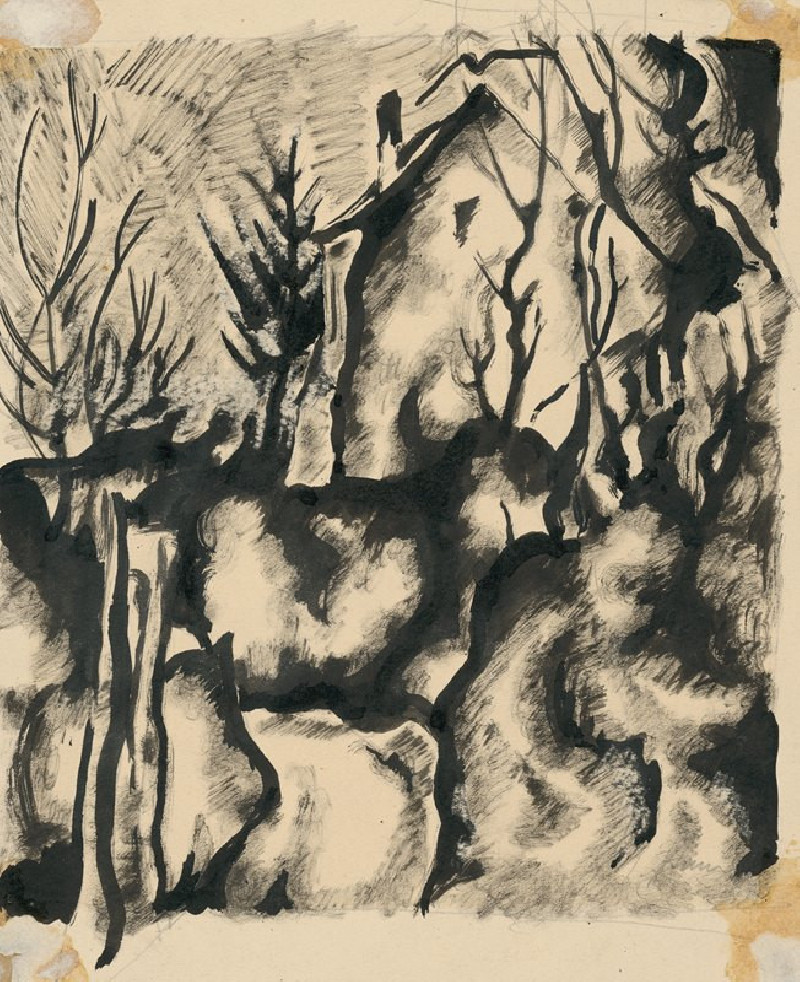Scene From An Unidentified Drama
Technique: Giclée quality print
Recommended by our customers
More about this artwork
This artwork by Utagawa Toyokuni illustrates a dramatic and intense moment from a kabuki play, which, though unidentified, highlights key features of Edo period (1603-1868) Japanese theatre. The painting is a diptych, meaning it consists of two panels that together form one cohesive scene.In this lively tableau, two actors are depicted deeply engaged in a combative encounter, each wielding a weapon—likely bamboo swords used in theatrical performances for fight scenes. The actor on the left is dressed in a vibrant costume with a strong mix of patterns and colors, including polka dots and solid colors with intricate robe ties visible. His expression is fierce and focused as he lunges forward, gripping his sword with both hands presumably to strike or parry.The actor on the right mirrors this intensity. He is garbed in a predominantly green and pink robe with floral patterns, his face marked by a predominantly fierce expression, accentuated by sharply arched eyebrows and a scowling mouth. His stance suggests he's either advancing or steadying himself for defense, with his sword raised to either block or retaliate.The dynamic postures and vivid facial expressions of the actors encapsulate the drama and vibrancy typical of kabuki theatre, where storytelling is significantly enhanced through stylized movements and emotional expressions.
Delivery
Returns
Utagawa Toyokuni (1769-1825) was a prominent Japanese woodblock printmaker and painter of the Edo period. Born in Edo (now Tokyo), he was the chief disciple of Utagawa Toyoharu, a well-respected printmaker. He specialized in kabuki theater prints, which depicted famous actors in performances and featured dramatic scenes from plays. In addition to kabuki theater prints, Toyokuni also produced portraits of geishas, landscapes, and scenes from everyday life. He eventually became a leading master of the Utagawa School.

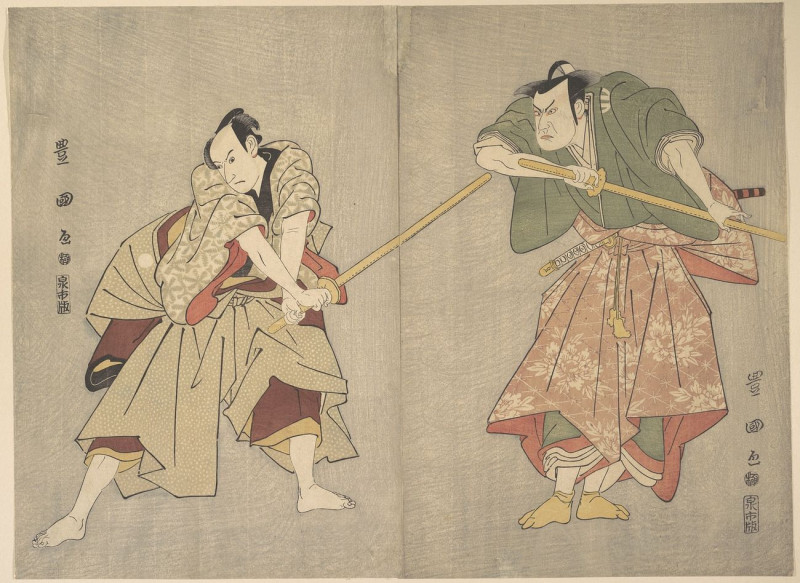
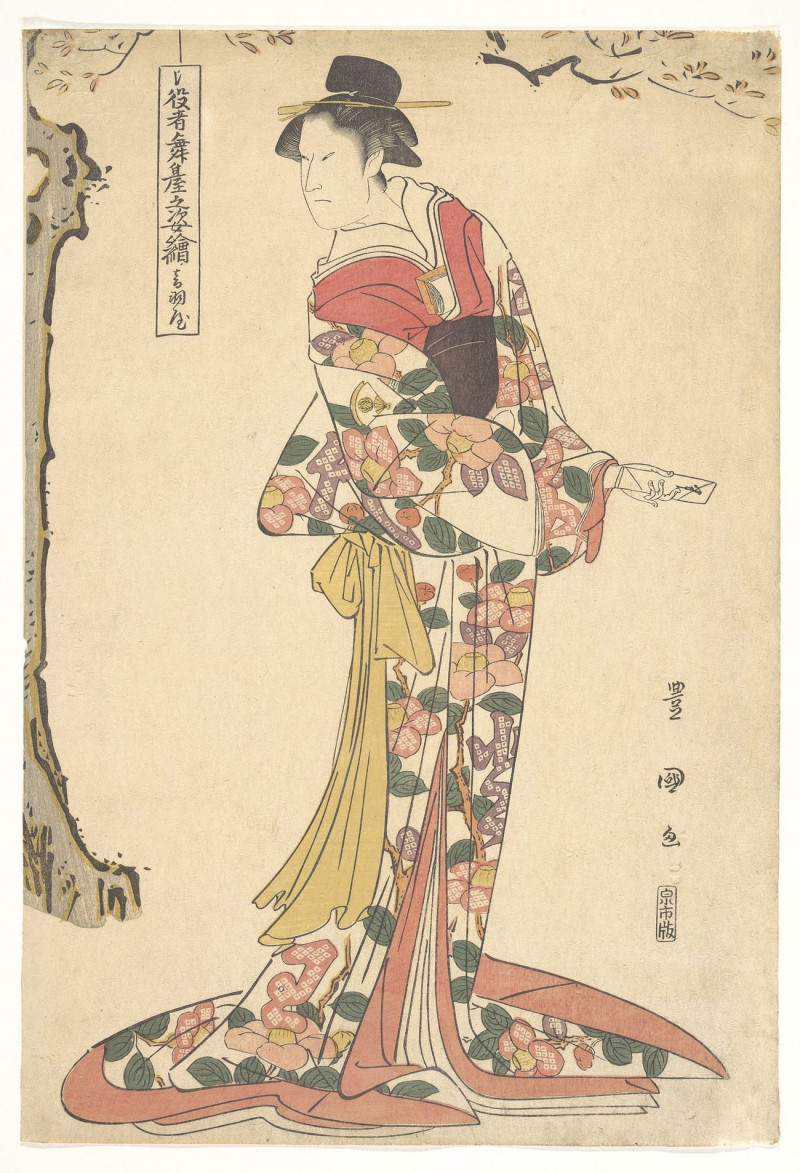
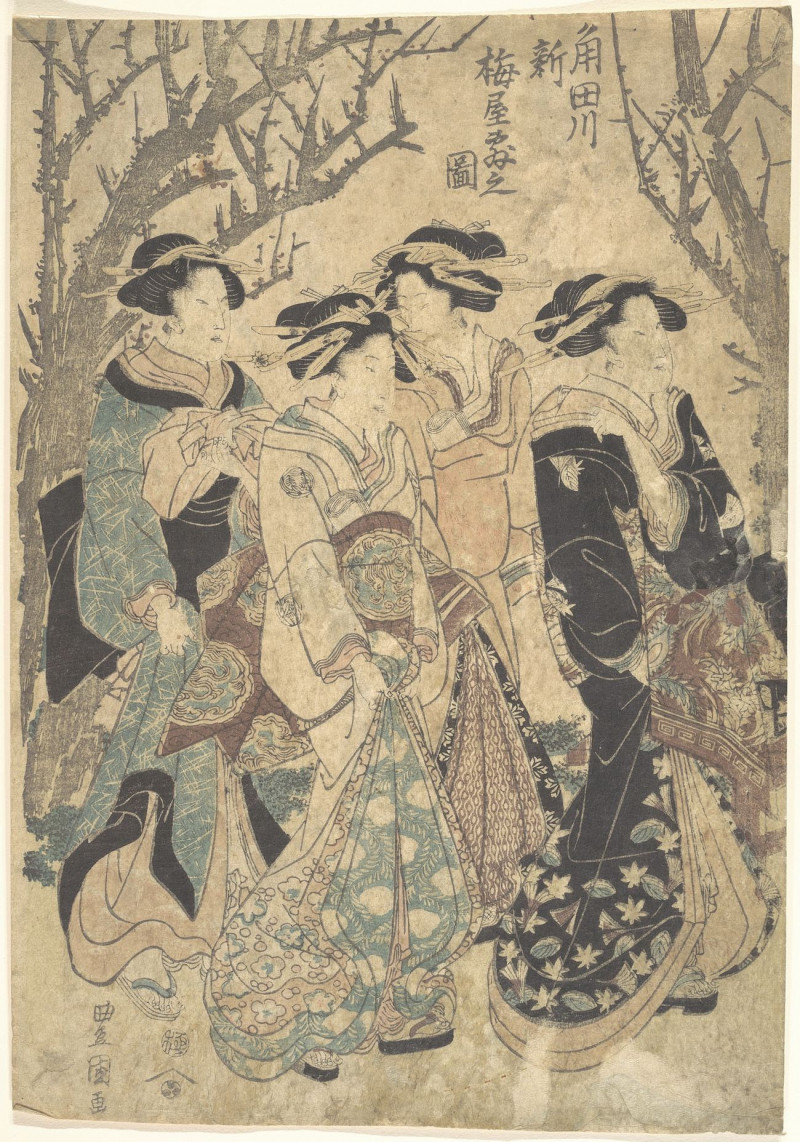


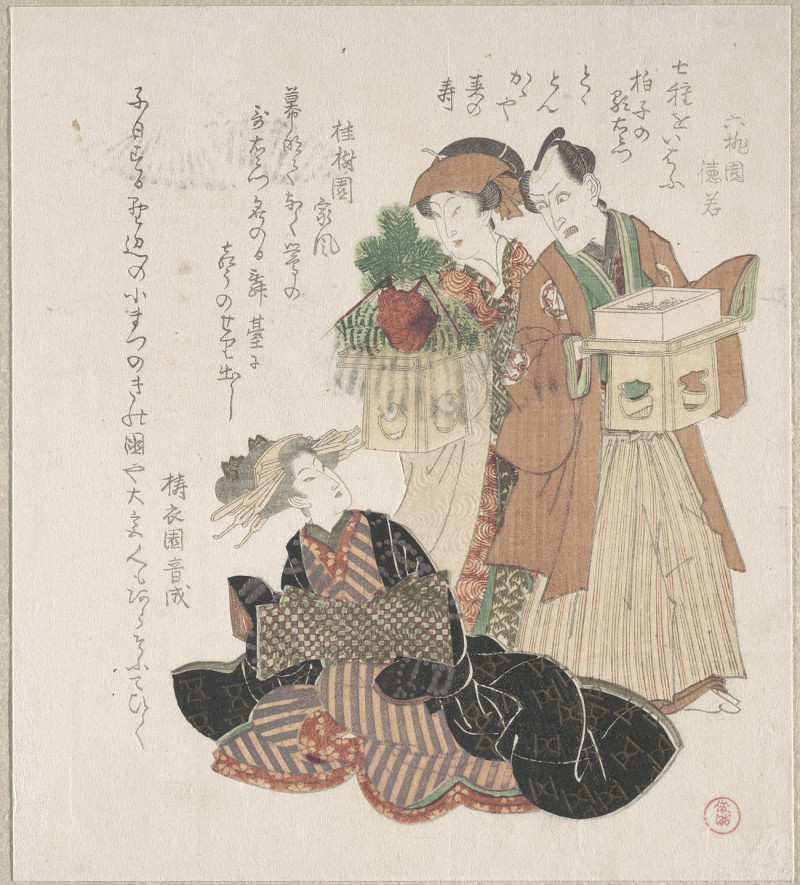
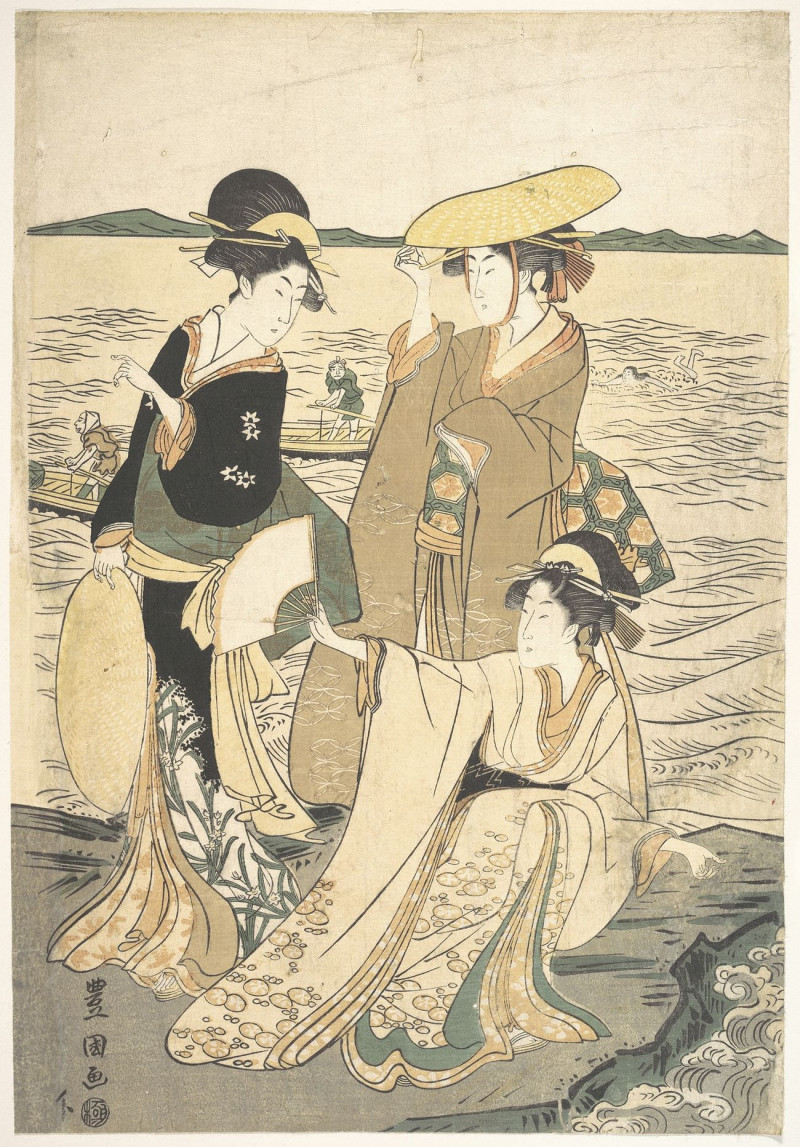
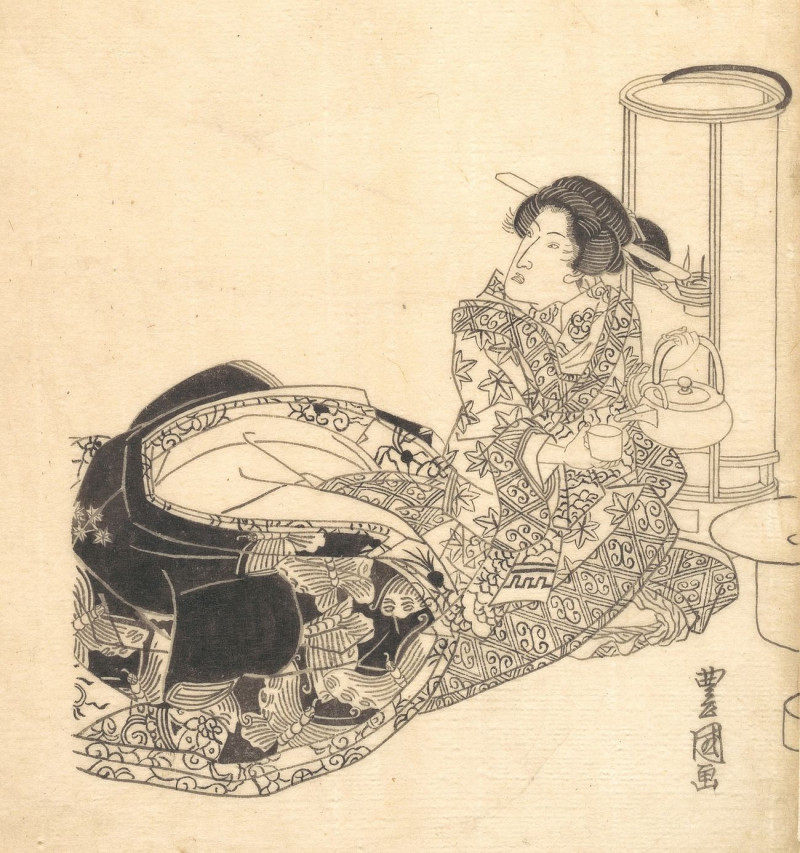

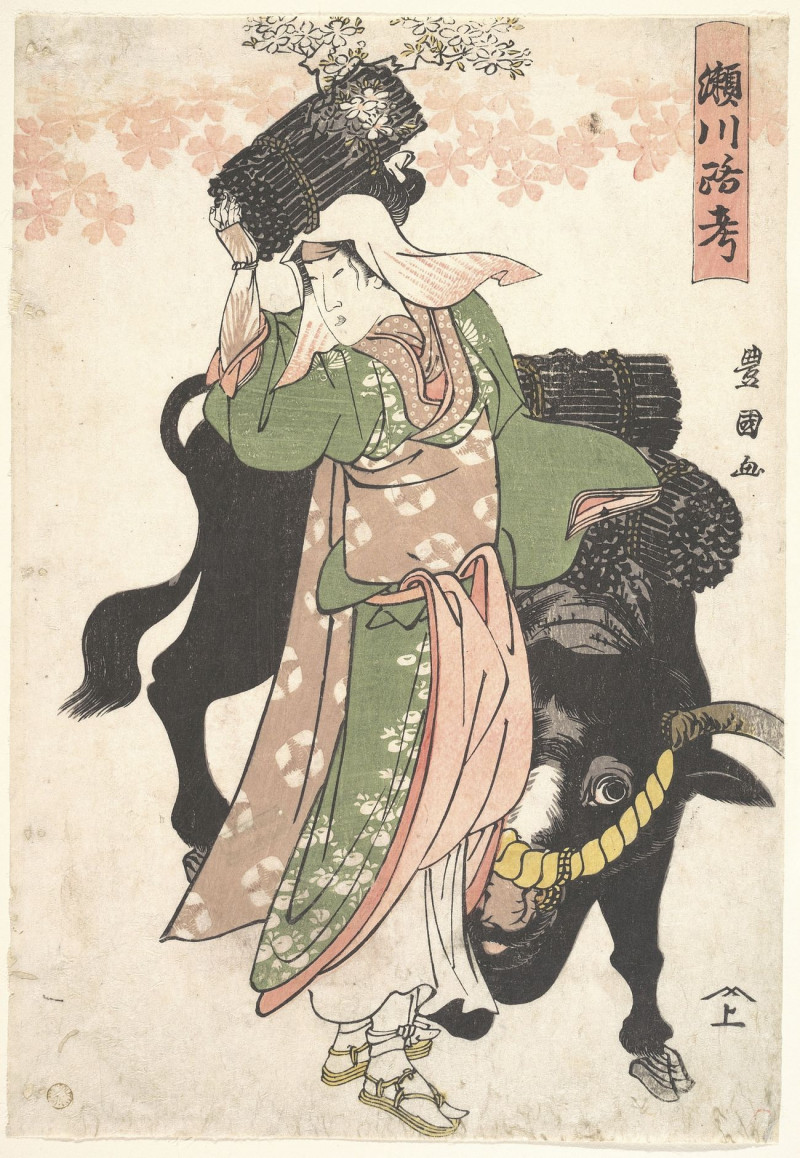
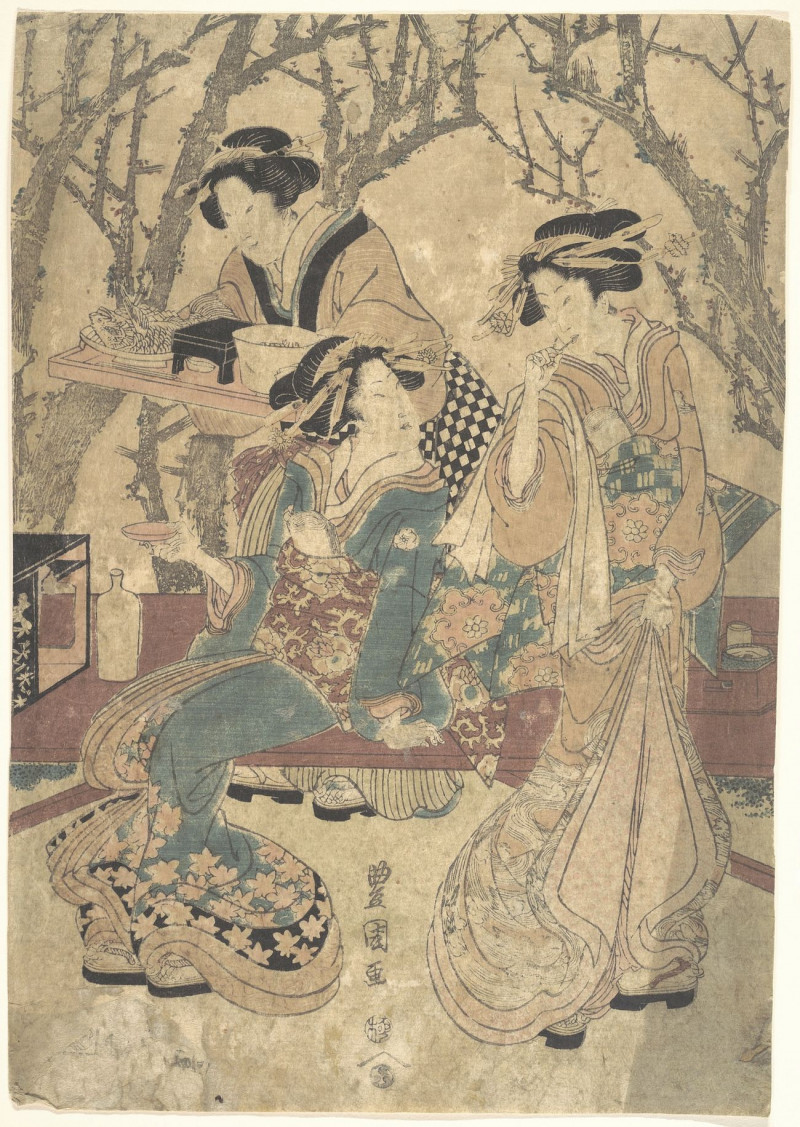
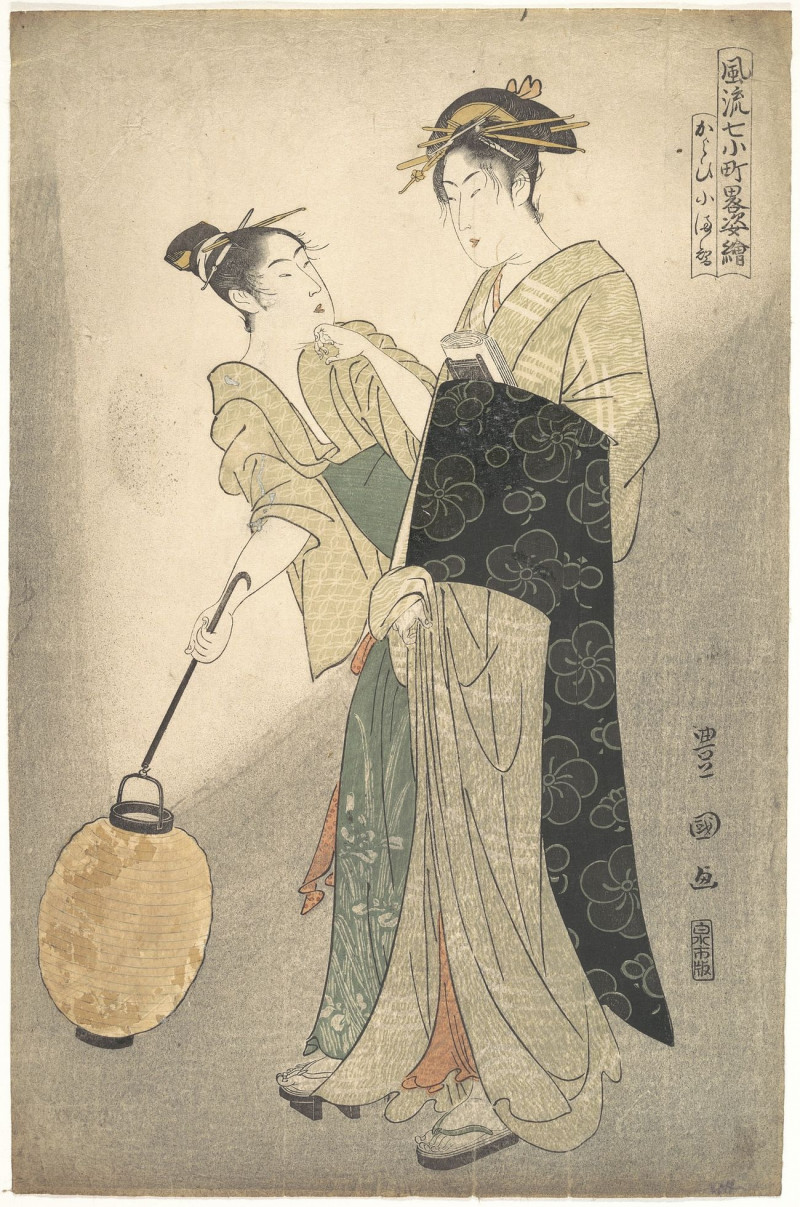

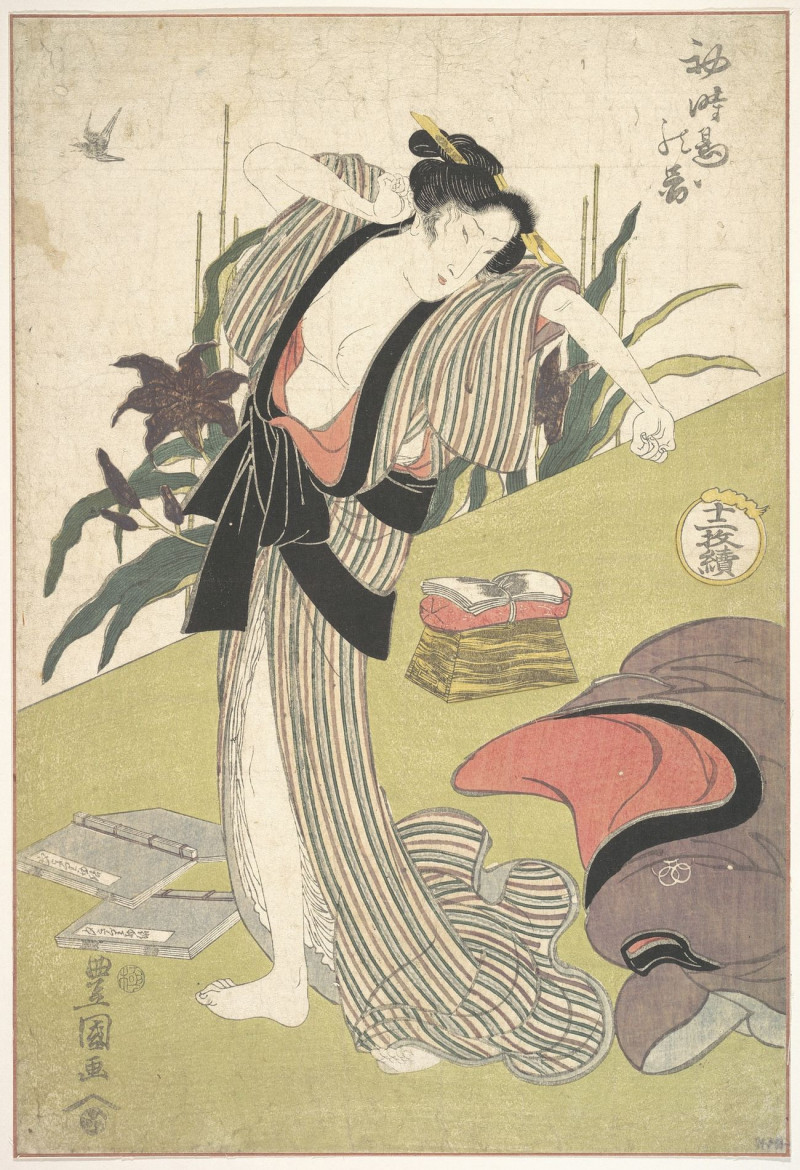

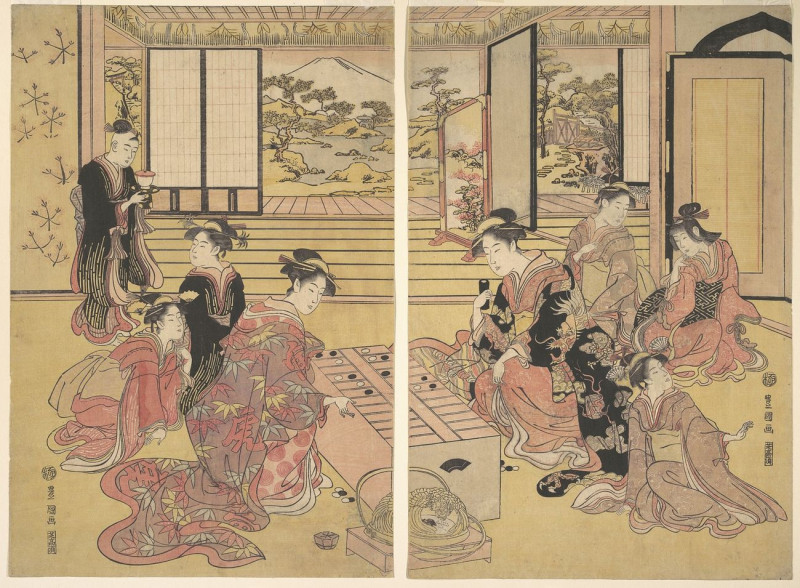

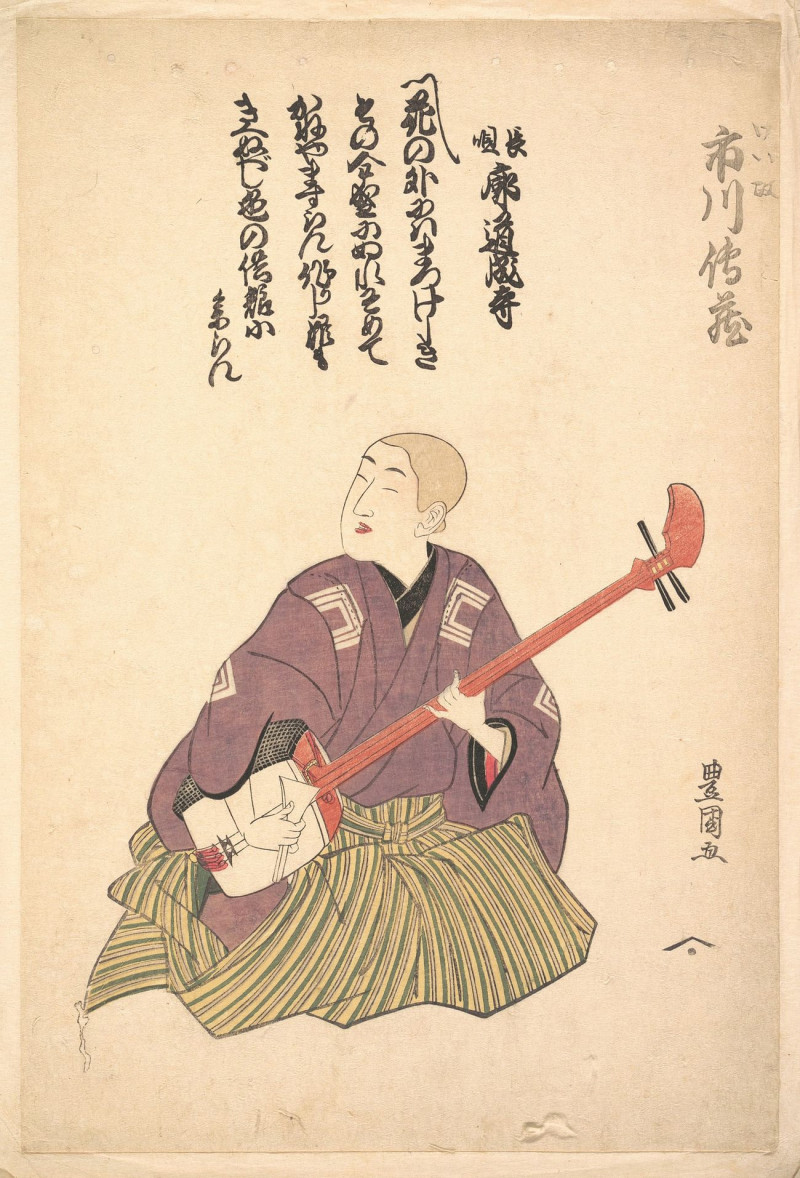

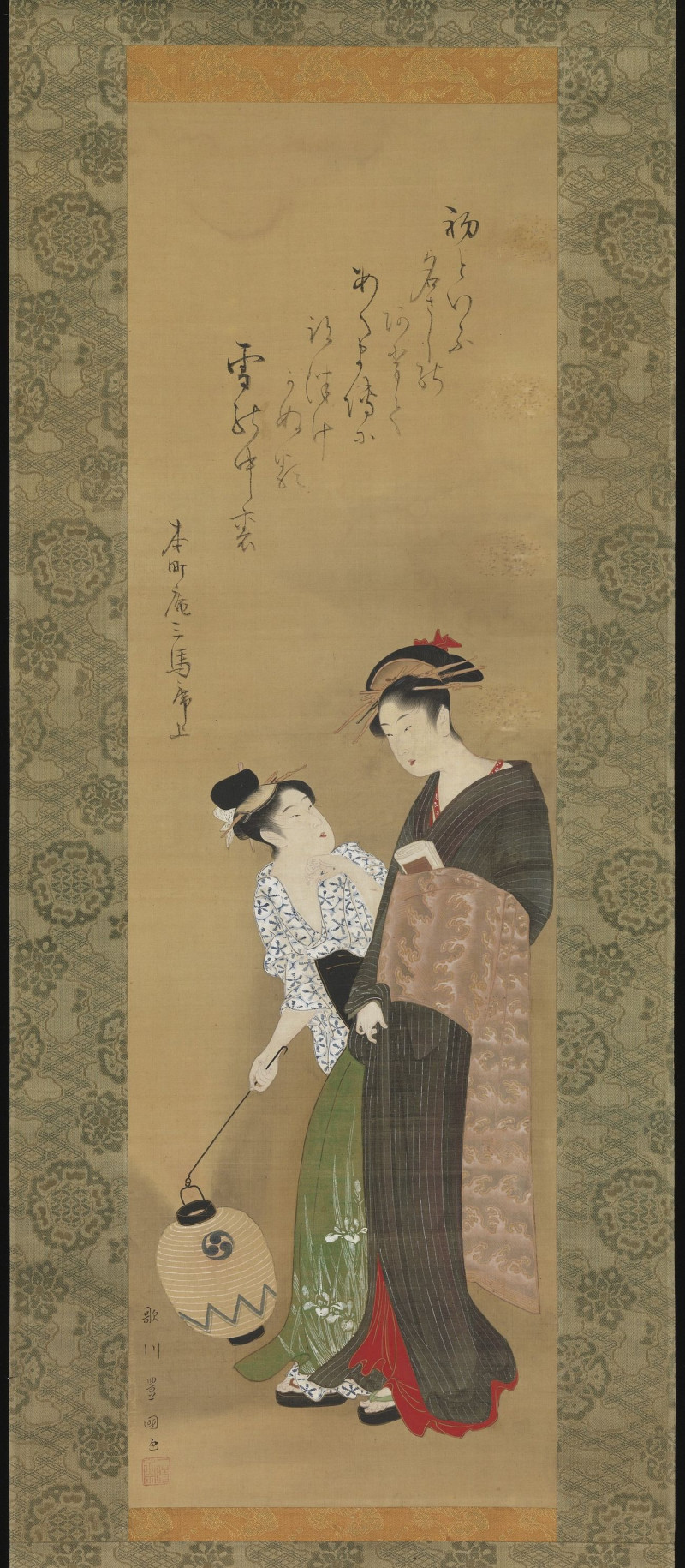
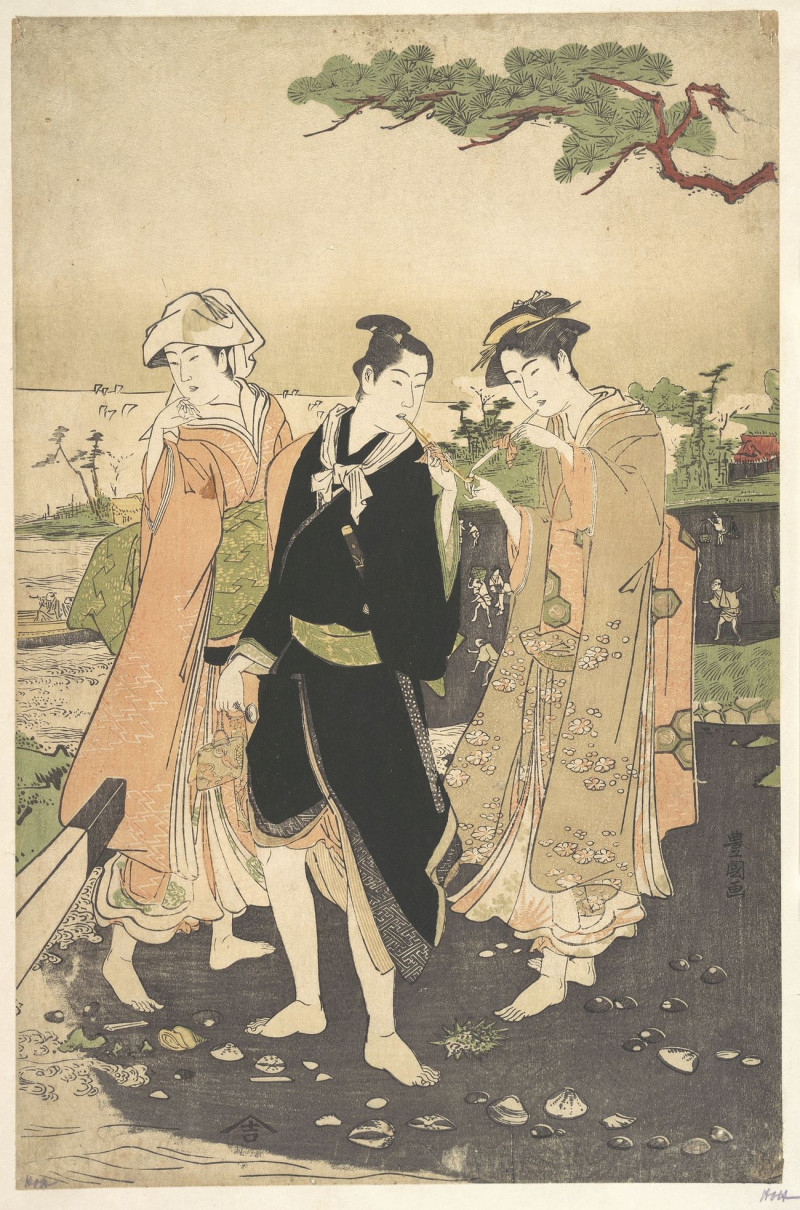

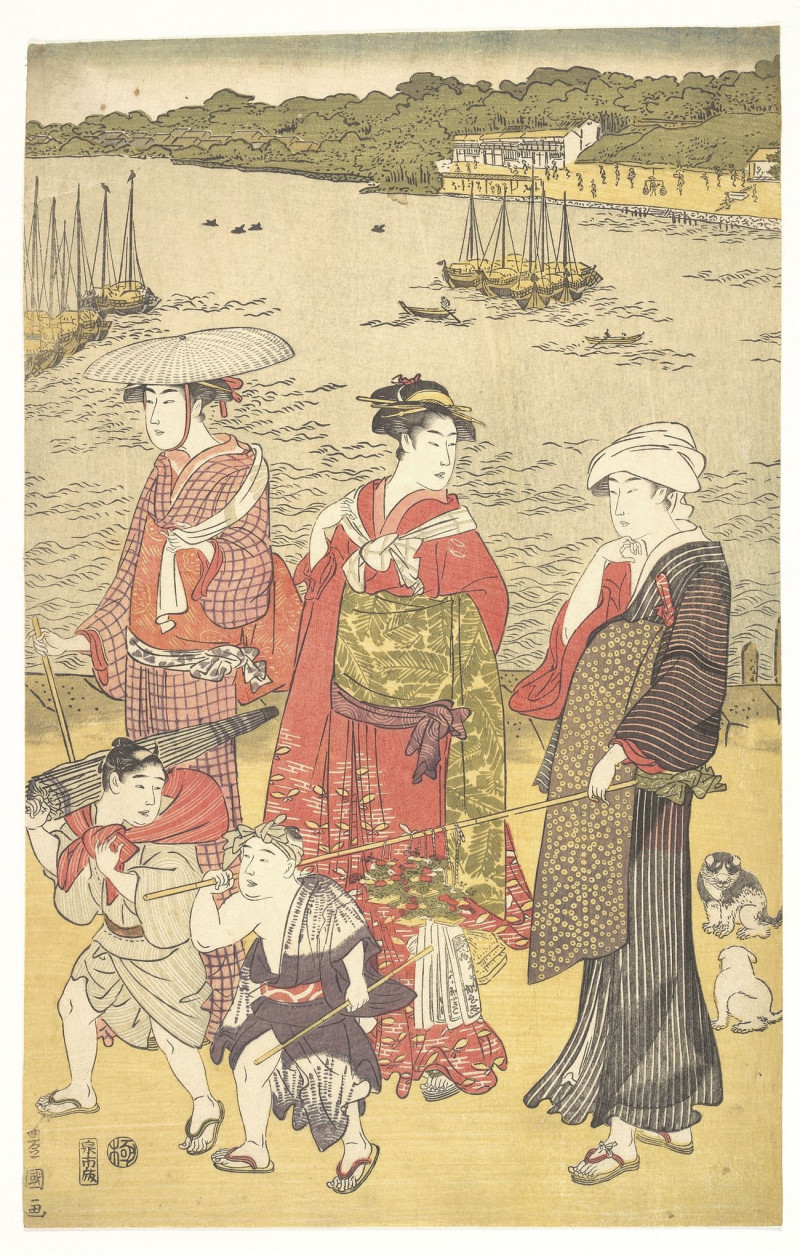
![Amusements Of Kabuki Actors Of The “Third Floor” [Dressing Room] reproduction of painting by Utagawa Toyokuni. ALL GICLEE PRINTS](https://reprodukcijos.lt/32918-large_default/reproduction-of-amusements-of-kabuki-actors-of-the-third-floor-dressing-room.jpg)
